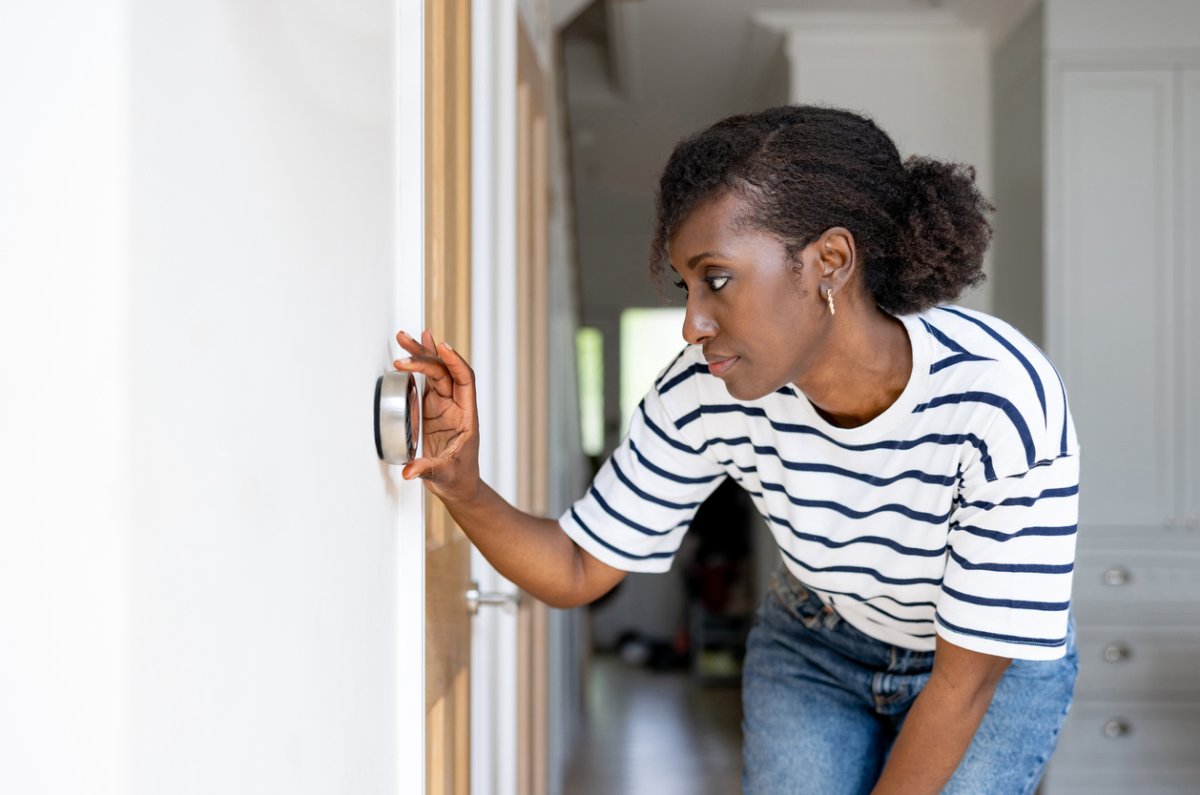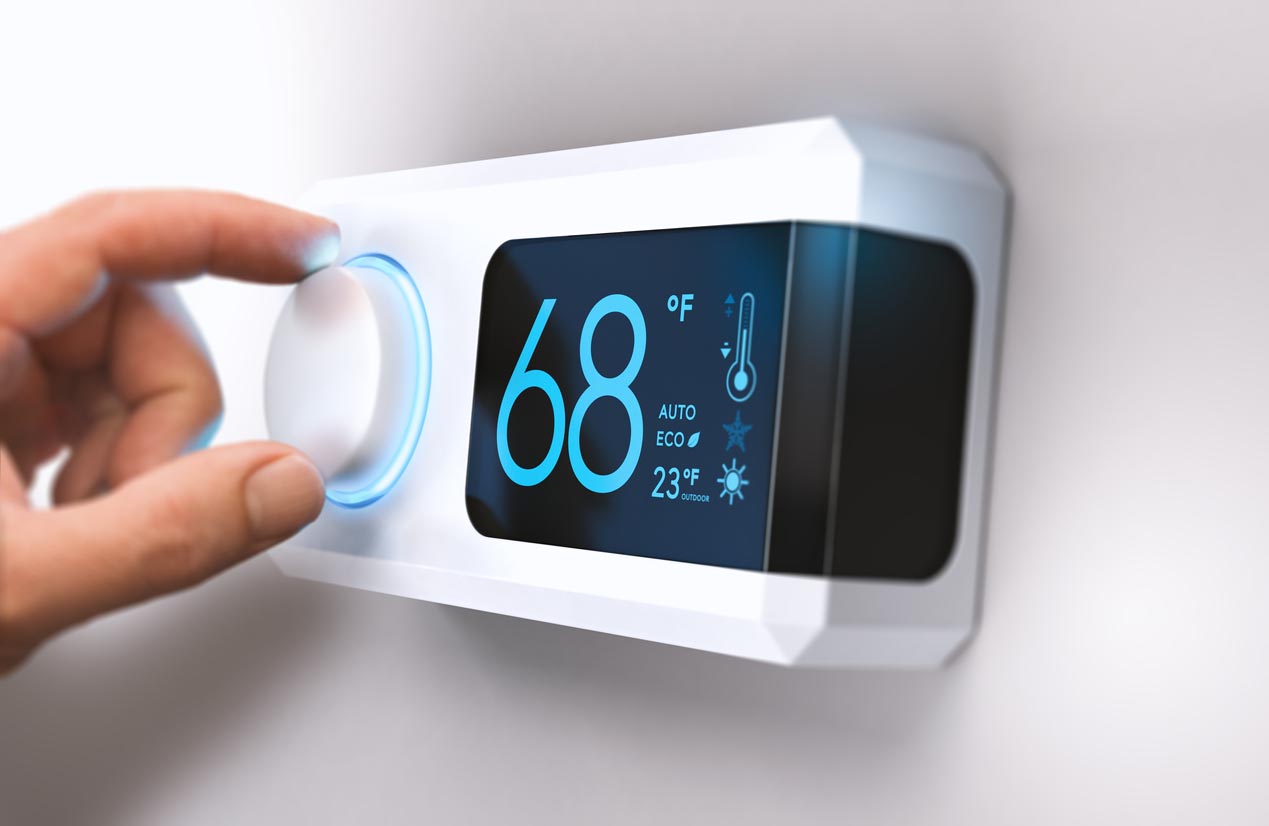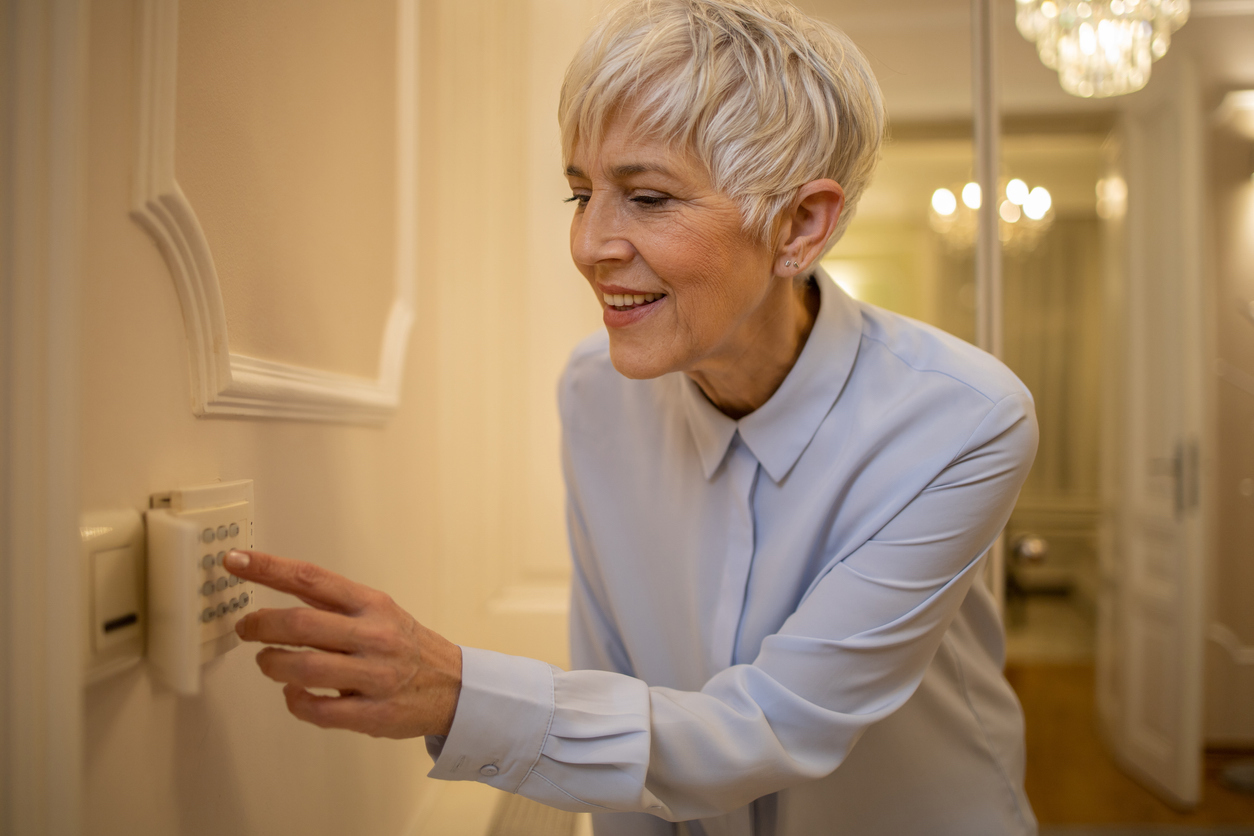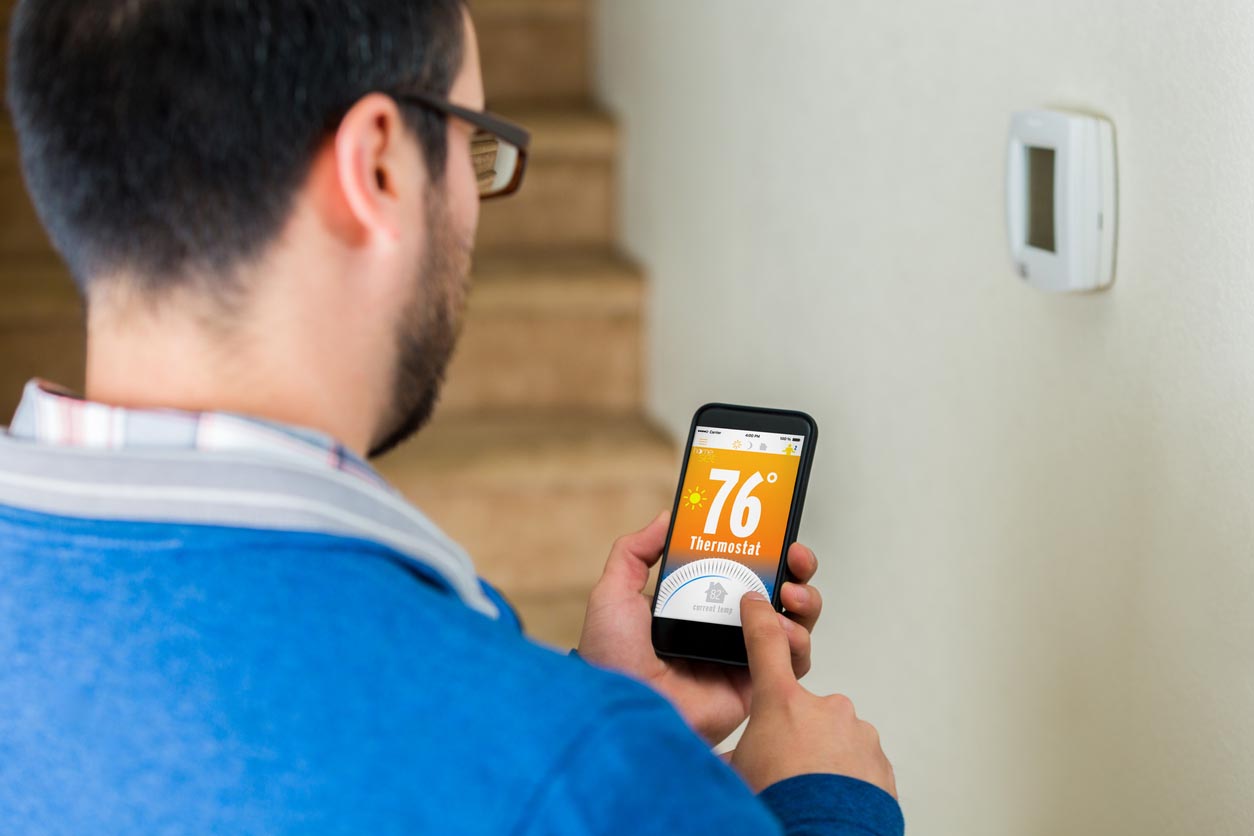

We may earn revenue from the products available on this page and participate in affiliate programs. Learn More ›
Q: My partner and I have an ongoing disagreement about the right temperature setting for the heat during the coldest months of the year. How can we get the most energy savings? What’s the best thermostat setting for winter?
A: By following a few energy-saving strategies, you can make a big difference during the chilly months of winter. According to the U.S. Department of Energy, it’s possible to save 10 percent a year on energy bills by being conservative with thermostat settings year-round.
We consulted an HVAC expert about thermostat-setting strategies during the coldest months of the year, and how we can save on energy costs. Here’s what he said.
The optimal winter thermostat setting is the lowest comfortable temperature, which is usually 68 degrees Fahrenheit.

“I prefer setting the thermostat to around 68 degrees Fahrenheit (20 degrees Celsius) during the day. This temperature strikes a balance between comfort and energy efficiency,” says Josh Mitchell, HVAC technician and founder of Air Conditioner Lab. “At night, lowering it to about 65 degrees Fahrenheit (18 degrees Celsius) is comfortable for sleeping and helps save on heating costs.”
According to the Department of Energy, setting your thermostat to the lowest comfortable temperature, which is typically 68 degrees Fahrenheit in the winter, helps slow down heat loss for homes with a regular furnace or baseboard heating system. However, that’s not the case for homes with heat pumps. Dialing down the thermostat too much can make a heat pump less efficient.
Everyone has a different comfort zone when it comes to temperatures. Just because 68 degrees can be an ideal temperature for a house in terms of reducing energy consumption doesn’t mean it’s right for everyone. Some people may prefer to set the thermostat slightly higher, at 70 degrees, and that’s okay.
RELATED: The Best Home Thermostats for Efficient Heating and Cooling, Tested
Situate the thermostat strategically for energy savings.

It’s essential to install your thermostat in the right location to prevent inaccurate temperature readings. Called ‘ghost readings,’ a thermostat may be triggered to run unnecessarily if placed near drafts, sunlight, and doorways. If air flow near the thermostat is blocked by furniture, it also may not run effectively.
Mitchell says that the best place to locate a thermostat is on an interior wall that experiences the natural air flow in the home and is away from direct sunlight, drafts, doorways, and windows.
Turning the thermostat temperature down by 10 degrees for 8 hours a day can save you money.
Unless you work from home, turning the thermostat down during the workday can mean higher savings on your energy bill. However, if you have pets, set the thermostat to a temperature that will keep them comfortable while you’re gone. For many furry pets, cooler temperatures are a welcome respite. Still, the exact comfort zone will vary depending on the kind of pet and the animal’s size.
Another ideal time to lower the indoor temperature is while you sleep. After all, research suggests that most people sleep poorly in overly warm conditions.
Mitchell recommends a few other money-saving tips:
- Use a programmable thermostat: This allows you to automatically set specific temperatures for different times of the day.
- Seal drafts: Insulate windows and doors to prevent heat loss.
- Maintain your HVAC system: Regular maintenance ensures your heating system runs efficiently.
- Wear layered clothing: Dressing warmly can allow you to keep the thermostat at a lower temperature.
RELATED: Surprisingly, Our Favorite Window Insulation Isn’t the Thickest
Gradually lower the temperature as your household acclimates to the season.

Your body requires time to adapt to slightly cooler temperatures. So there’s no need to (literally) go cold turkey when cooler outdoor temps arrive. Lower the temperature gradually, so you have time to adjust to being a little chilly. Until you acclimate, wear layers, don warm socks, and have a snuggly blanket on hand.
Maintain the heating system throughout the year, so it runs efficiently.
Regardless of how low you set the thermostat, you won’t save on your heating bill if your furnace or heating system works inefficiently. Make sure to do the following:
- Get your furnace serviced once a year to make sure it’s in working order. Do this in the fall before winter weather sets in.
- Change or clean filters regularly as dirty filters restrict airflow and reduce efficiency.
- Keep vents unobstructed to ensure that furniture or curtains are not blocking air vents.
- Check window and door frames for air leaks and seal the leaks you find. If your windows are old, consider an upgrade to energy-efficient ones.
- Take advantage of natural sunlight. On very sunny days, open the window shades to let the warm light pour in.
Avoid setting the temperature too high or too low during the winter.
“Setting the thermostat too high in winter can lead to excessive energy consumption and higher utility bills,” Mitchell explains. “Conversely, setting it too low might not provide adequate comfort and could even risk pipes freezing. The key is to find a balanced setting that ensures comfort without overburdening your heating system.”
RELATED: Can Your Utility Company Control Your Home’s Thermostat?
Install a programmable thermostat for automatic temperature adjustments.

Consider investing in a programmable thermostat that’ll automatically adjust the temperature for you. Programmable thermostats are ideal for people with consistent schedules.
“I’m a strong advocate for smart thermostats,” Mitchell says. “They offer advanced features like learning your schedule, remote control via a smartphone app, and energy usage reports, which not only enhances energy efficiency but also contributes to a more comfortable living environment.”
If your day-to-day routine is a bit more haphazard than a regular 9 to 5, consider a smart thermostat. Helpful features of some smart thermostats include settings that automatically detect your absence and lower the thermostat temperature while you’re gone. Some units can adjust the indoor temperature based on weather data.
“The ability to monitor and adjust your home’s temperature settings from anywhere can lead to cost savings and reduce your carbon footprint,” Mitchell explains.
